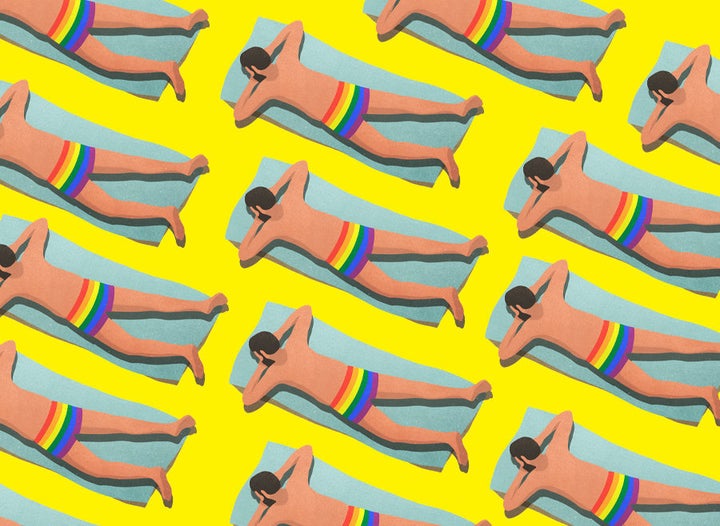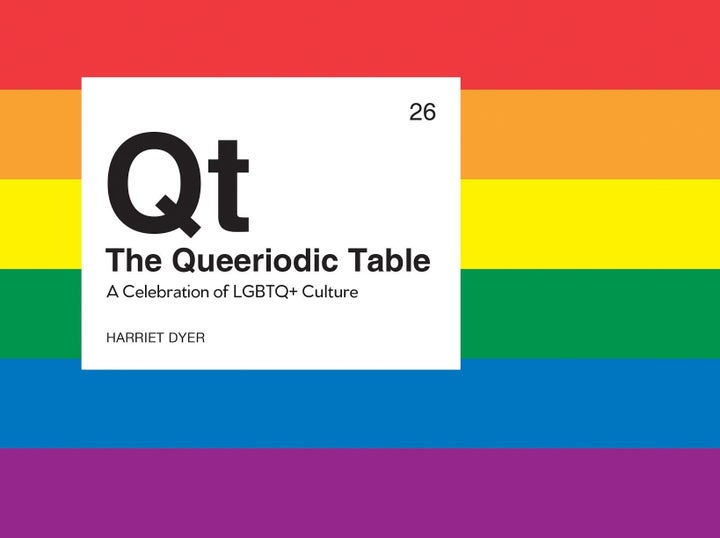Queer people have influenced so much of British culture, yet all too often their lives are written in the margins of history books rather than centre page. Not only does this erase the contributions of those individuals, it decreases the visibility of queer people living in the UK today.
Someone who wants to address this is Harriet Dyer, author of ‘The Queeriodic Table’, a book looking at both the richness of modern queer culture – and its history. The book celebrates the pioneers of queer art, literature, music, TV and film past and present and it isn’t Dyer’s first literary venture.
The 29-year-old, who lives in Brighton, has also written ‘From Ace to Ze: The Little Book of LGBT Terms’, which she describes as a dictionary for beginners looking to familiarise themselves with queer language. We asked Dyer the seven things she thinks we should know about queer culture.

Queer can be a more inclusive term to use than LGBTQ+. “There hasn’t been some new law passed saying you have to say queer instead of LGBT, but just think about how inclusive it is,” says Dyer. But by saying LGBT or LGBTQ+, she argues, you’re naming a series of identities and in doing that, there's the potential to exclude others you don't mention. Dyer belives that queer is more of an umbrella term. “It also has space for flexibility and fluidity in one’s identity too."
Queer culture has existed since the dawn of humanity. Some of the earliest rock art in the world found in Sicily and Zimbabwe depicts gay sex, says Dyer. “Examples of same-sex unions crop up in Crete, Lesotho, Rome, Spain and France, to name a few... even pirates had a form of same-sex marriage – queer people have been involved in every step, in every culture.”
It’s impossible to discuss queer culture without delving into Stonewall. In 1969, riots took place in New York when police tried to run a raid on gay bar Stonewall. Among those who fought back were lesbian bouncer Stormé DeLarverie, drag queens, transwomen and activists Marsha P. Johnson and Sylvia Rivera. “After the riots, members of the queer community in the city organised protests in an effort to improve conditions for queer people,” explains Dyer. “Within two years, a new wave of gay rights campaigning had swept the world.”
Queer erasure has been a problem for years. “Popular history is guilty of scrubbing evidence of queerness from books, documentaries, film and TV,” argues Dyer. Queer people pay the price twice when contemporary culture doesn’t include their stories. “Firstly, we don’t see reflections of ourselves in the great stories of the day and secondly, when people look back, they take the lack of representation as evidence that we didn’t exist.”

Queer people have done awesome things throughout history. Dyer says people who say “oh, there weren’t gay people in my day” are often referring to depictions of queer identity in culture – which is often erased. “I would say to that person, not only were there gay people in your lifetime but they were kickass as well,” she says. “They did awesome things – they were artists, musicians, freedom fighters – but they might not have appeared in the media at the time, and that’s a loss for all of us.”
Dyer loves looking back at those who were uninterested in conforming to the norms – Edward Carpenter, the Victorian philosopher who lived openly with the love of his life George Merril, and Ma Rainey, the turn-of-the-century blues artist who sang about her love of women.
Queer icons are incredibly important for queer people. It’s the same as having working class cultural icons, says Dyer. If you’re working class, you see those people and think it’s within your grasp. “This happens in every iteration of identity,” she adds. “There has been a slight narrative of white cis-gendered men being the successes, so we need to see people out there succeeding. What about Alan Turing or Virginia Woolf? We can’t talk about their glorious work without queerness – a fundamental anchor block of their identify.”
Queer literature is a great way to start your queer education. Dyer advises you to read Vito Russo’s ‘The Celluloid Closet’ to learn how queer lives in Hollywood were censored; ‘The Well of Loneliness’ by Radclyffe Hall, because of the fascinating queer protagonist; ‘Maurice’ by E.M. Forster, who repressed his sexuality for much of his life; or Christopher Isherwood’s ‘Goodbye to Berlin’, Rita Mae Brown’s ‘Rubyfruit Jungle’ and Leslie Feinberg’s ‘Stone Butch Blues’.”
“My hope is that even if you aren’t queer, or are totally new to this whole thing, you have to acknowledge queer culture has been a big part of mainstream culture,” she adds.
Useful websites and helplines:
- London Lesbian & Gay switchboard (LLGS) is a free confidential support & information helpline for LGBT communities throughout the UK | 0300 330 0630
- Manchester Lesbian and Gay Switchboard is a free support, information and referral service for the Manchester and North-West area | 0161 235 8000
- Stonewall for more information on other LGBT services and helplines | 08000 502020